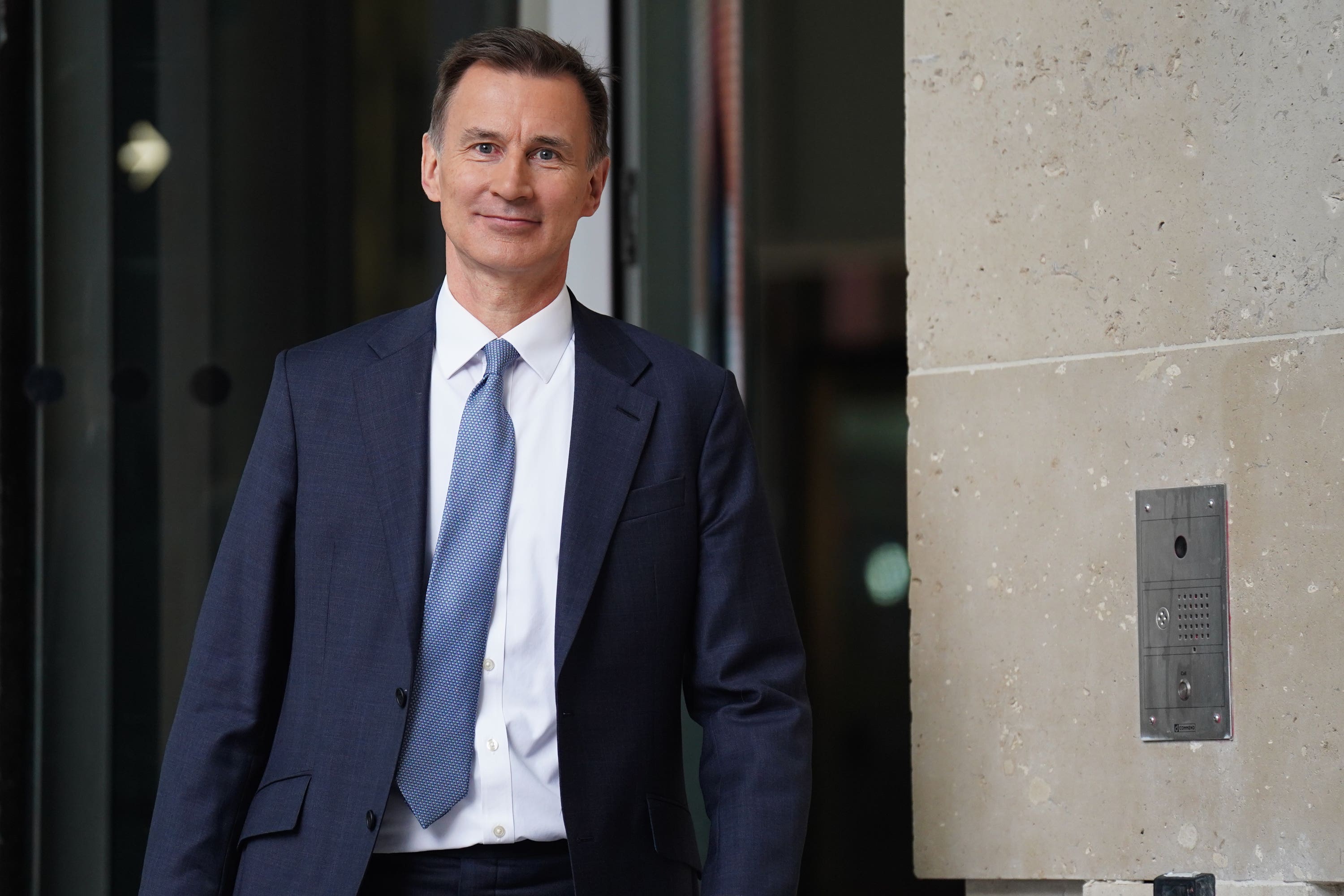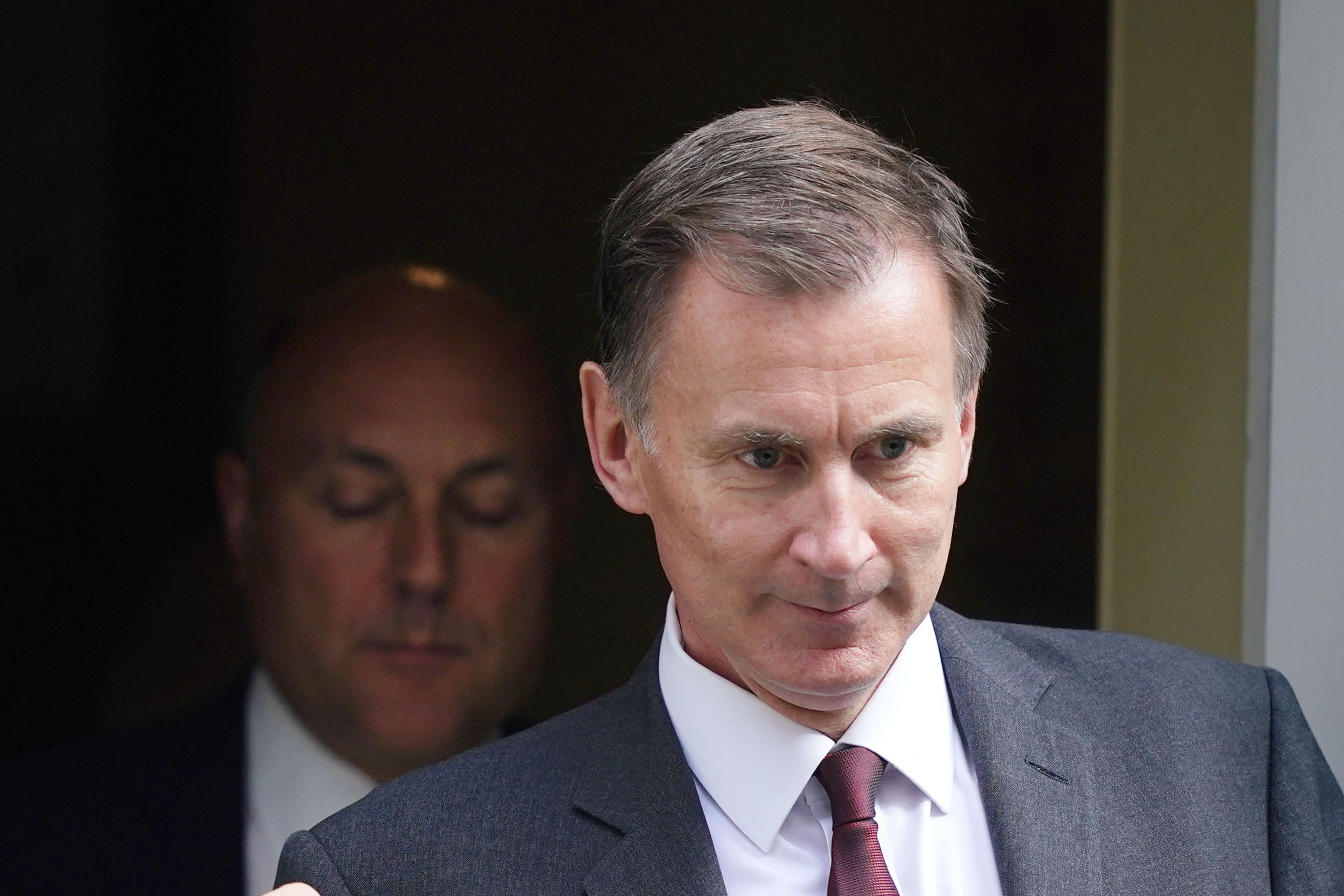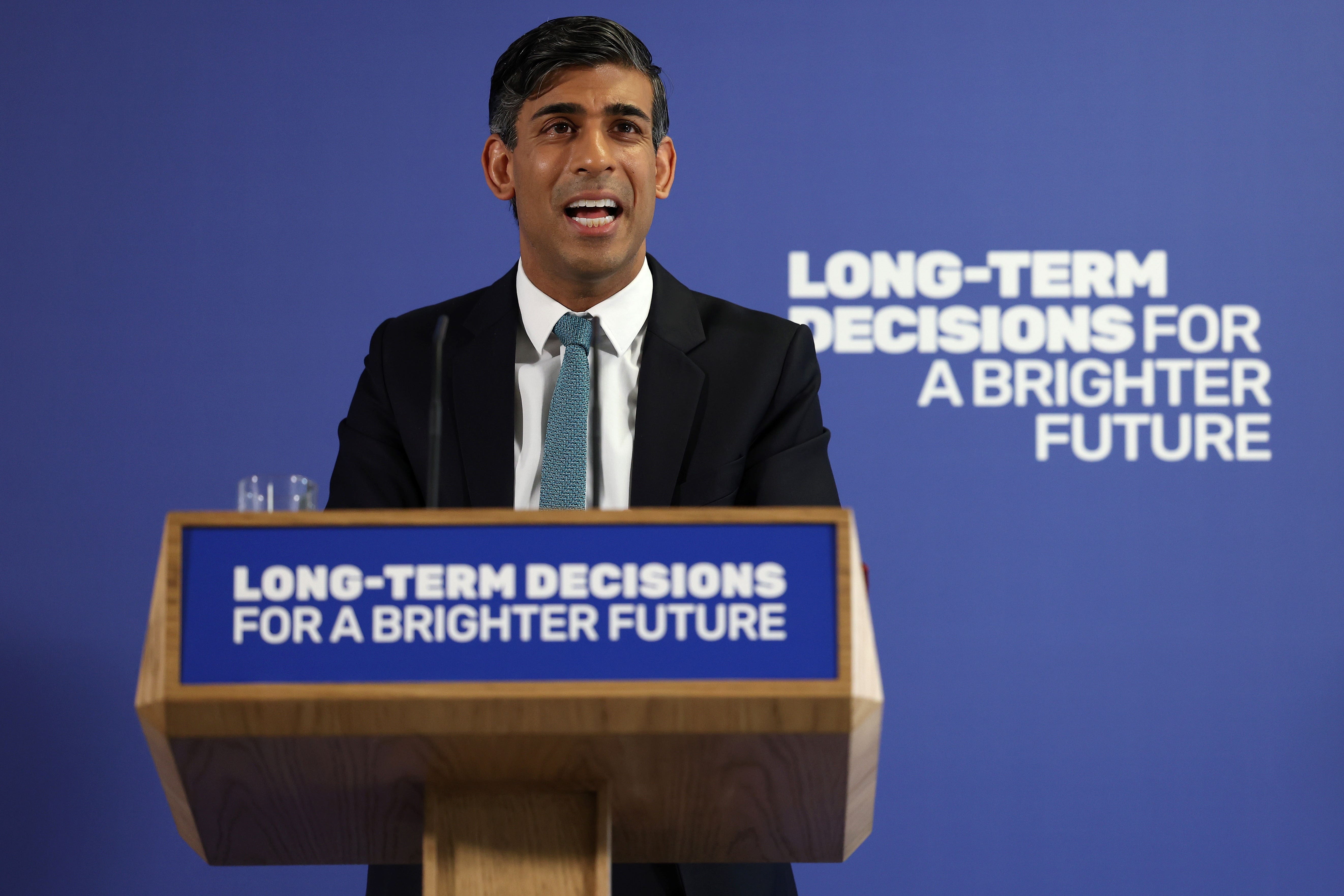What time is the Autumn Statement and what will Jeremy Hunt unveil?
Jeremy Hunt is set to deliver the Autumn Statement on Wednesday
Your support helps us to tell the story
From reproductive rights to climate change to Big Tech, The Independent is on the ground when the story is developing. Whether it's investigating the financials of Elon Musk's pro-Trump PAC or producing our latest documentary, 'The A Word', which shines a light on the American women fighting for reproductive rights, we know how important it is to parse out the facts from the messaging.
At such a critical moment in US history, we need reporters on the ground. Your donation allows us to keep sending journalists to speak to both sides of the story.
The Independent is trusted by Americans across the entire political spectrum. And unlike many other quality news outlets, we choose not to lock Americans out of our reporting and analysis with paywalls. We believe quality journalism should be available to everyone, paid for by those who can afford it.
Your support makes all the difference.Chancellor Jeremy Hunt faces a troubling economic backdrop when he delivers his Autumn Statement to the country on Wednesday.
Economic forecasts show that growth is stagnant and Britain is teetering on the edge of a recession - while high prices and the cost of living crisis continues to impact millions of hard-pressed families.
However, last week Mr Hunt had a sliver of good news as inflation has halved over the past year, leading him to say the economy had “turned a corner” and fuelling expectations he will unveil tax cuts on Wednesday.
With an eye on next year’s general election, backbench Tory MPs are particularly keen for Mr Hunt to focus on measures that help hard up households and lower the tax burden.
Rishi Sunak has done little to dampen expectations that Mr Hunt will unveil tax cuts later week, saying on Monday the government can now “responsibly start to cut taxes.”

The Independent has summarised everything you need to know:
What is the Autumn Statement and what time does it start?
It is the chancellor’s main opportunity to make tax and spending announcements outside of the Budget and Mr Hunt will set out his plans in the Commons at around 12.30pm on Wednesday.
Tax cuts and growing the economy
Mr Hunt will promise to cut business taxes, remove planning red tape and speed up access to the national grid.
The Times reported that 28 million people would see a cut to their national insurance while multiple reports suggest that full expensing, a scheme allowing firms to deduct spending on investment in new machinery and equipment from profits, will be made permanent.
There will be support for entrepreneurs to raise capital, measures to “get behind our fastest growing industries”, policies to unlock foreign direct investment and measures to boost productivity, an issue which has dogged the UK economy for years.
“Taken together we will increase business investment in the UK economy by around £20 billion a year over the next decade and get Britain growing,” Mr Hunt will say.
Mr Hunt will also reportedly freeze alcohol duty and increase the state pension by 8.5 per cent, in line with the triple-lock.

For almost three million workers, the government has already announced an increase in the national living wage, which will rise from £10.42 to £11.44 from April, with the policy also extended to cover workers aged 21 and over, rather than 23 and over.
It will mean a £1,800 annual pay rise next year for a full-time worker on the living wage, while 18 to 20-year-olds will receive a £1.11 hourly rise to £8.60.
Changes to inheritance tax
Mr Hunt is reportedly considering plans to cut inheritance tax, a move which would be immensely popular within his own party but would only benefit a small proportion of the public.
Currently inheritance tax is charged at 40 per cent on estates of more than £325,000, with an extra £175,000 towards a main residence passed to direct descendants. Mr Hunt is considering reducing it by 50 per cent, 30 per cent or 20 per cent, as reported by The Times.
The Tories are said to then be considering making abolishing it entirely an election manifesto pledge next year, which could cost £7 billion a year in the short term.
However, the Institute for Fiscal Studies forecast that the amount that the tax raises could rise to more than £15 billion by 2033.
Shadow chancellor Rachel Reeves has said cutting inheritance tax is “not the right thing to do” now.
Only around 4 per cent of deaths in 2020/21 resulted in inheritance tax being paid, with exemptions allowing many couples to pass on up to £1 million tax-free.

Cuts to benefits
The government has already announced a fresh welfare crackdown in what it says is an effort to get people back to work -but Mr Hunt could also squeeze the amount of money people are receiving.
Ministers have already announced that free prescriptions and legal aid will be cut off for benefit claimants who are deemed fit to work and do not seek employment.
Typically ministers use the September figure for inflation when uprating working-age benefits, which would mean a 6.7 per cent hike.
But Mr Hunt has not ruled out using October’s far lower figure of 4.6 per cent, which economists say would cut spending by around £3 billion.
Asked about the possible move in an interview with the BBC, the chancellor said: “We will always be a compassionate Conservative government but part of how we make our economy successful is by making sure companies like this company can find the staff they need.
“Nearly a million vacancies across the economy, so we do need to reform our welfare system.”
The savings would largely impact working-age households receiving disability or means-tested benefits, according to the Institute for Fiscal Studies.
Sam Ray-Chaudhuri, a research economist at IFS, said: “Using the October rather than September inflation rate to uprate benefits would save the government money, by cutting incomes for millions of low-income working-age people. Importantly, both effects would be permanent, whether or not the move to basing annual benefit increases on the October inflation rate were to be retained in subsequent years.
“This implies that real benefit levels would not just take several years to regain their pre-pandemic values, due to the rather arcane lagged method for increasing them – they would never get back to where they were, without subsequent changes in policy.”




Join our commenting forum
Join thought-provoking conversations, follow other Independent readers and see their replies
Comments